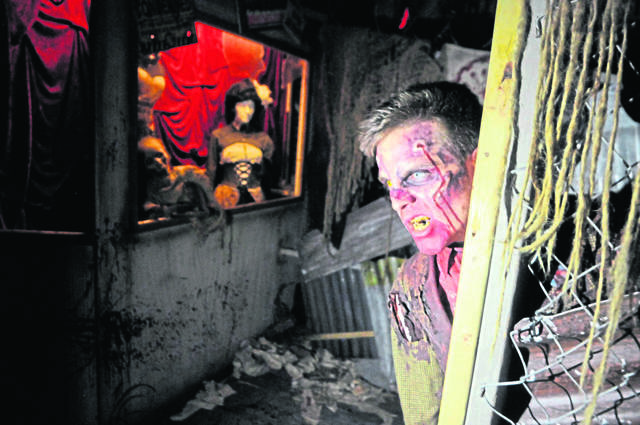Lori Falce: Read all about zombie vacuums
“A Dyson Sphere Could Bring Humans Back from the Dead, Researchers Say.”
OK, that might be the most startling headline I have ever read.
It popped up on my smartphone. I did a double take and obviously I clicked, curious about how my vacuum is going to create zombies.
News flash — it won’t. Someone at Popular Mechanics worked overtime coming up with a headline that is simultaneously absolutely accurate and completely misleading.
No, this Dyson sphere isn’t the big ball on your upright floor cleaner. It’s a theoretical physics construct. And the whole “back from the dead” is a what-if scenario that involves nanorobots and artificial intelligence powered by a contained sun. It definitely teeters on the line between groundbreaking thought experiment and science fiction.
But I found all of this out because I didn’t just stop at the headline. That’s something that needs to become a habit.
A headline’s purpose is never to tell the whole story. It can’t.
The top headlines on TribLIVE.com have 40 to 60 to 80 characters. That’s a fraction of a tweet, a sliver of a Facebook post. If there’s anything the past few years of social media should have taught us, it’s that we need more information rather than less.
A headline can tell you that a law was passed. You need the rest of the story to tell you what the law entails, who voted for it and when it goes into effect.
A headline can tell you someone was shot. The rest of the story tells you if it was deliberate or accidental, if the shooter was known and if charges have been filed.
A headline is the flashing neon sign that tells you why you should read the story, like the bright red “OPEN” at a restaurant. You still need to read the menu to find out what’s being served.
When it comes to news stories, it’s all too easy to see when that doesn’t happen. Comment sections and social media posts and shares are rife with evidence that some people didn’t open the story before they started to support or condemn it.
News literacy is the ability to discern good information from bad information when assessing a story. Was it from a reliable source? Was the information factually accurate? Is it verifiable?
But there is another important component to reading the news — actually reading it. If we are scrolling through information on line, we have to choose to take the next step and injest more than what is served up in that short nibble. If we are reading in print, we have to follow the rest of the story when it jumps from the front page to the inside.
We have to be curious enough to go beyond the obvious and incomplete information of the headline, because those 50 or so letters were never intended to be the whole story.
Even if a story about a vacuum-generated zombie apocalypse would be an epic read.
Lori Falce is the Tribune-Review community engagement editor and an opinion columnist. For more than 30 years, she has covered Pennsylvania politics, Penn State, crime and communities. She joined the Trib in 2018. She can be reached at lfalce@triblive.com.
Remove the ads from your TribLIVE reading experience but still support the journalists who create the content with TribLIVE Ad-Free.

